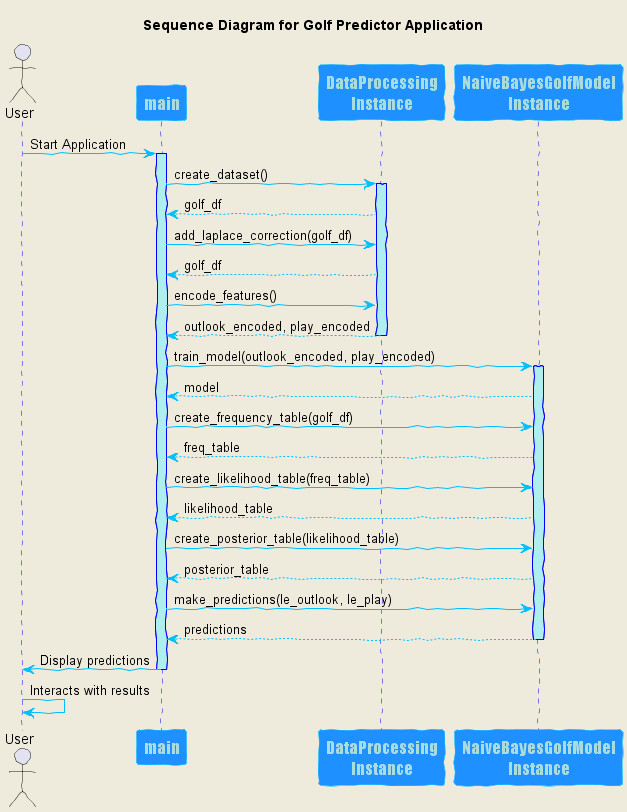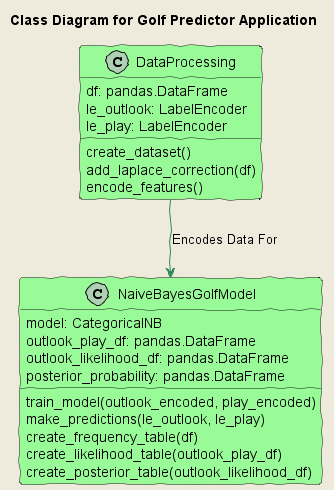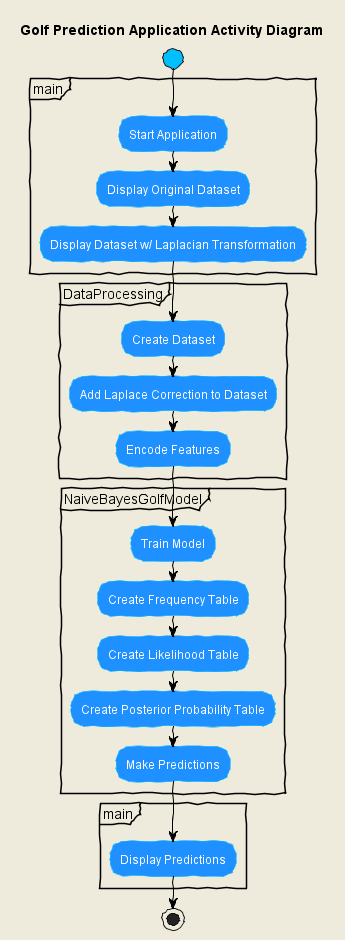Mastering Naive Bayes Classification: Predicting Golf Play Based on Weather
Harnessing Naive Bayes and Scikit-Learn for Data Predictions
Unravel the Mysteries of Naive Bayes with Golf Predictions
Embark on an exciting journey into the world of the Naive Bayes Classifier with our comprehensive guide. Using scikit-learn and Python, we’ll predict golf play based on weather conditions. This in-depth project will cover:
- The fundamentals of the Naive Bayes Classifier and its role in machine learning.
- An introduction to the Golf Prediction problem and its dataset.
- The application of the Laplacian correction technique to handle zero-probability issues.
- A step-by-step guide to implementing the Naive Bayes Classifier with scikit-learn in Python.
- An analysis of the predictions and an exploration of the impact of weather on golf play.
Whether you’re an AI enthusiast or an experienced data scientist, this project offers valuable insights into the Naive Bayes Classifier and its application to the Golf Prediction problem.
Naive Bayes Classifier
The Naive Bayes Classifier is a family of simple yet powerful machine learning algorithms that are used for classification tasks. These algorithms are based on applying Bayes' theorem, a fundamental theorem in probability theory and statistics that describes the relationship between the conditional and marginal probabilities of two random events.
The “naive” in Naive Bayes comes from the assumption that the features in a dataset are mutually independent. In real-world data, features are often not independent, but Naive Bayes classifiers can be quite effective even when this assumption is violated, especially in tasks like text classification and spam filtering.
Application in Machine Learning
In machine learning, Naive Bayes classifiers are often used for their simplicity and efficiency. Despite their simplicity, they can perform surprisingly well and are particularly popular in text classification tasks. Here are some key points from the scikit-learn documentation:
-
Gaussian Naive Bayes: This variant of Naive Bayes assumes that the likelihood of the features is Gaussian. This makes it suitable for real-valued data.
-
Multinomial Naive Bayes: This variant is used for multinomially distributed data, and is one of the two classic naive Bayes variants used in text classification.
-
Complement Naive Bayes: This variant is an adaptation of the standard multinomial naive Bayes algorithm that is particularly suited for imbalanced data sets.
-
Bernoulli Naive Bayes: This variant is used for binary/boolean features.
-
Categorical Naive Bayes: This variant is used for categorically distributed data. It assumes that each feature, which is described by the index, has its own categorical distribution.
Despite their simplicity and the naive assumption of feature independence, Naive Bayes classifiers often perform well in practice and are widely used due to their efficiency and ease of implementation.
The Golf Prediction Problem
The Golf Prediction problem involves predicting whether we will play golf on any given day, based on the day’s weather outlook. The dataset contains 14 observations and three features: (a) a sequential number representing the day each observation was recorded, (b) the categorical variable containing the weather outlook for that day (i.e., raining, overcast, or sunny), and (c) the target variable, indicating whether we played golf on that day (i.e., yes or no).
Visualizing the Naive Bayes Classifier
For a visual understanding of the flow and structure of the Naive Bayes Classifier, we’ve created a series of diagrams:



These diagrams provide a graphical representation of the Naive Bayes Classifier, helping you understand the interactions among the classifier’s components and the sequence of actions performed in the Golf Prediction problem.
GitHub Repository
Access the complete code and resources for this project on our GitHub repository:
Interactive Document Preview
Explore the Naive Bayes Golf Prediction project write-up with our interactive document preview. Feel free to zoom in, scroll, and navigate through the content.
Downloads
Download the project write-up in PDF format for offline reading or printing.
Conclusion
By implementing the Naive Bayes Classifier and using the scikit-learn library, we have demonstrated an effective approach to solving the Golf Prediction problem. This project has shown the power of Naive Bayes in classification tasks and provided insights into handling zero-probability issues using Laplacian correction. As we continue to explore the world of Artificial Intelligence and Machine Learning, we can apply these learnings to other classification problems and real-world applications.
Join the Discussion
We’d love to hear your thoughts, questions, and experiences related to the Naive Bayes Golf Prediction project! Feel free to join the conversation in our Disqus forum below. Share your insights, ask questions, and connect with like-minded individuals who are passionate about Naive Bayes, classification, and problem-solving.
Don’t hesitate to contribute your ideas or ask for help; we’re all here to learn and grow together. Let’s build a thriving community where we can discuss, learn, and explore the fascinating world of Naive Bayes and their role in tackling classification problems like Golf Predictions!

